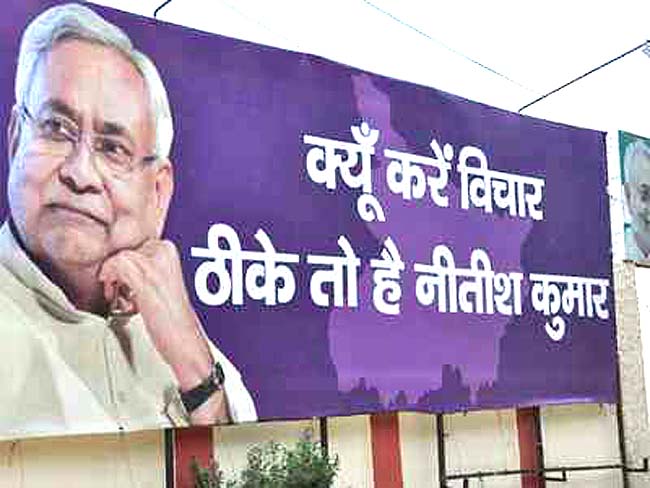
Recently a big hoarding has been prominently displayed outside the JD-U office in Patna saying - Kyun Karen Vichar Thike to Hain Nitish Kumar? It is not in accordance with the JD-U’s stand till recently where it has always glorified its leader Nitish Kumar and has presented him as a leader larger than the life. So, what has changed in Bihar which has forced Nitish Kumar and his party JD-U to adopt a defensive strategy more than a year before the upcoming assembly election?
To understand why such defensive strategy now - we need to first understand the factors and the scenarios which had helped Nitish Kumar take the center stage in the politics of Bihar and overtime become the unquestionable power center in the state. And then look at the sequence of events in last few years which has reduced his confidence so much that he has been forced to take a defensive strategy for the upcoming 2020 assembly election in the state.
It’s a fact that Nitish Kumar has never been a mass leader andin spite of all efforts, he has never been able to build strong cadre for his party JD-U in the state, but still he has not only reached to the top of the politics of the state but has consistently maintained his position at the top for one and a half decade now. If he doesn’t have mass following then how he could manage to defeat a true mass leader Lalu Prasad and how could he manage to keep the BJP- a strong cadre based party on his side and on his conditions. Further how he has managed to consistently get support of the electorate of the Bihar. To understand all this we need to understand the political, social history of Bihar and the sequence of events happened in the state politics in last 3 decades. After independence, for the first five decades the politics and the society of Bihar was completely dominated by the upper castes.
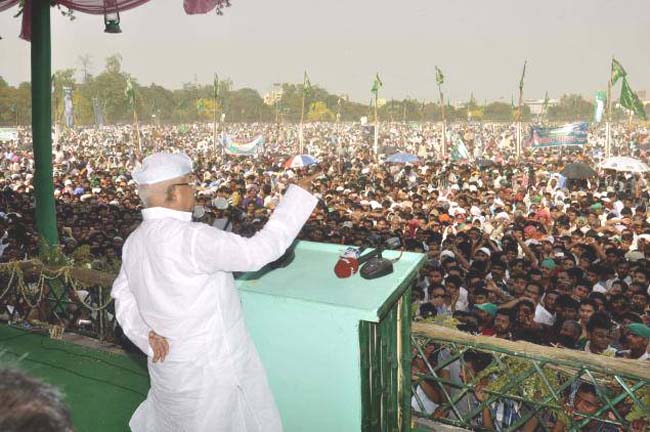
In 1991, Lalu Prasad broke this dominance and established himself as a leader of the poor, backward classes and minorities. He was largely popular in his first term, but in the second term his government for the first two years and then Rabri Devi government for the rest of the term was marred with large scale corruption charges, serious law and order problem and large scale favoritism. The society and the government was being dominated by the Yadavs, and the larger non-Yadav backward castes started feeling upset and uneasy. They didn’t want Lalu Prasad regime to continue, but at the same time they were equally reluctant to support the BJP, which was taken as an upper caste party. Congress party had become irrelevant and was not an option.
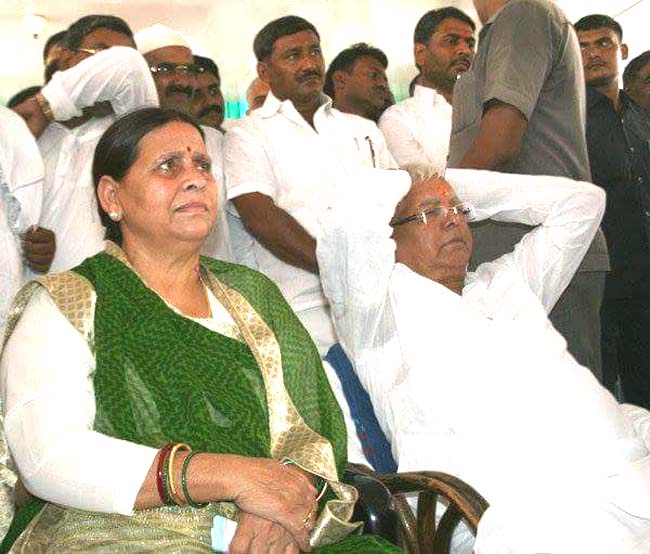
The BJP which after the downfall of the Congress party had emerged fast in the politics of the state, was struck at some point - it had brought majority of the upper castes on its side, but it was not able to connect with the politically significant backward castes and the Muslims were anyway against it. So, it had clear realization that it won’t be able to challenge Lalu Prasad of its own in the foreseen future. Hence when a few MPs of the erstwhile Janta Dal (RJD) broke away to form Samta Party under the leadership of George Fernandez and Nitish Kumar, the BJP offered unconditional support to it. Later after the 2000 assembly election, when the NDA got an opportunity to form the government, the BJP offered the chief minister post to Nitish Kumar even though his Samta party had only 34 MLAs much less than the BJP’s number which was 67. It was a strategic move by the BJP, and it worked for it as well as Nitish Kumar. The non-Yadav backward and scheduled castes accepted Nitish Kumar (an OBC) led NDA as an option, he was acceptable to the upper castes as well as he was in alliance with the BJP and his image was of an honest and moderate leader. For many of the Muslims, who were as uneasy as many others in the Lalu-Rabri regime found a credible option in Nitish Kumar due to his secular and honest credentials. With all such changes in the political-social dynamics of Bihar, the NDA won the 2005 assembly election with thundering majority under the leadership of Nitish Kumar. Then onwards politics of Bihar has been revolving around Nitish Kumar.
So, the two factors which worked for Nitish Kumar were – The overall condition of hopelessness in Bihar during the last few years of the Lalu-Rabri regime and Nitish Kumar’s acceptability by the widely divided society of Bihar.
Over time both thefactors have diminished to a large extent more so in last 5 years - and this has brought down the stature of Nitish Kumar considerably in the politics of Bihar. The last 3 major elections held in Bihar – the 2014 general election, 2015 assembly election and the 2019 general election - has especial significance in this regard,the three elections combined together have brought major change in the political dynamics of Bihar, which was actually so favorable for Nitish Kumar till before the 2014 general election. Let’s look at the three election in the context of what change each one of these have brought in the political dynamics of Bihar.
Little before the 2014 general election, the JD-U came out of the NDA protesting against the BJP’s intent to declare Narendra Modi as its prime ministerial candidate for the 2014 general election. It was the first instance when the JD-U was contesting an election without the BJP or any major party on its side. When the results were out, it was only the JD-U, which was at loss, it lost 18 of its existing seats, it could won only 2 seats and lost deposit in 23 out of 38 seats it had contested. The RJD and the Congress had more or less maintained their vote share and tally. The BJP led NDA had won 32 out of the 40 seats in the state.
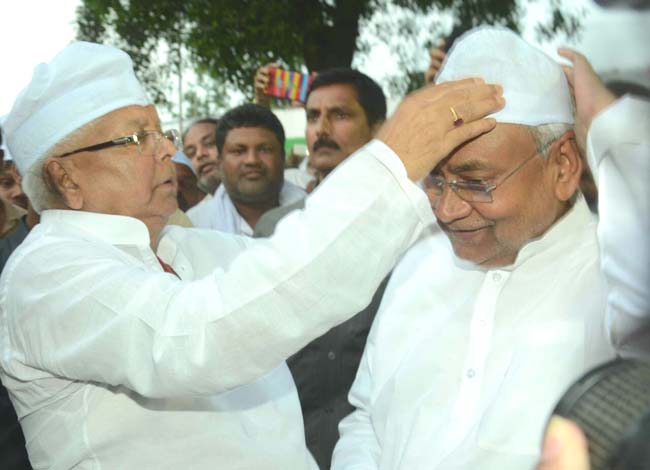
At the national level, the BJP got majority of its own and the NDA tally was much higher, Narendra Modi became the prime minister of India. Upset with these results, Nitish joined hands with Lalu Prasad, and both together got a massive mandate in the 2015 assembly election. This election revived Lalu Prasad and his party RJD in the politics of Bihar. The RJD won more seats than the JDU and its vote percentage was also higher than the JDU. Very soon, Nitish Kumar realized that he will lose his political ground to Lalu Prasad and returned back to the NDA fold.
The 2019 general election, the NDA fought in the name of Narendra Modi everywhere in India and Bihar as well was not an exception. The NDA swept Bihar in this election winning 39 out of 40 seats and the credit was largely given to Narendra Modi and not Nitish Kumar.
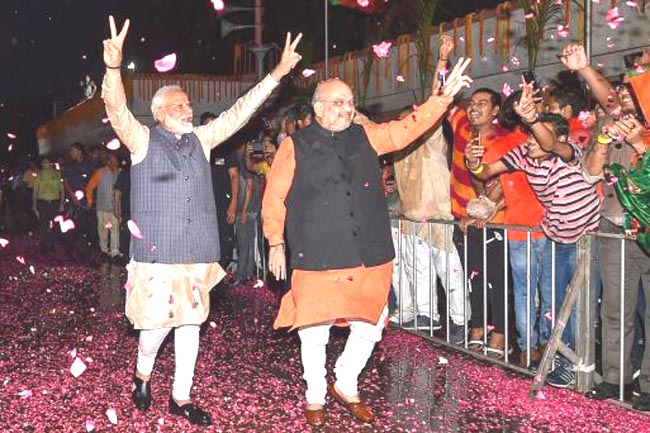
Today’s Bihar is not as widely divided on caste lines as it was used to be a decade back, and over time the other two major parties which were used to be two distant poles in the caste ridden politics of Bihar - the BJP and the RJD – have been able to gain acceptability by the wider sections of the social, political groups. Therefore Nitish Kumar no more carries the advantage of being the only acceptable political option for different sections of the social and political groups in the state. The BJP under the leadership of Narendra Modi and Amit Shah has been able to connect to the larger OBC, EBC classes everywhere in India and Bihar is definitely not an exception. In last few years, it has been able to develop and bring forward the leaders from the backward classes who are now actually having appeal among the OBC and the EBC classes to such a level that they can pose challenge to the dominance of Lalu Prasad and Nitish Kumar on the backward class politics in the state. The RJD as well under the new young leadership is able to not only consolidate its core Yadav, Muslim support base but expand it beyond that. With the addition of new caste based parties – RLSP of Upendra Kushwaha, HAM of Jitan Ram Manjhi and VIP of Mukesh Sahni, a backward class centered or caste based politics will not work for any party. Therefore every party wants to ensure it is acceptable to different sections of the society.
Bihar has come out of the state of hopelessness, and the appetite for development and expectations from the government has increased manifolds, and Nitish Kumar doesn’t seem to be able to cope up with this expectation for quite some time now. Everyone agrees that Nitish has brought Bihar to a decent state from a condition which looked completely hopeless to many- the law and order in the state is improved, there are better road connectivity andelectricity supply, and there has been some hiring by government departments. But people feel that they have rewarded him enough for all this, and now expectations are clearly much more than what is getting delivered at ground. There is also a feeling that Nitish Kumar is taking the electorate for granted assuming that people of Bihar has no other option and this is based on real facts, some of these are the following –
In last few years, law and order situation in Bihar has deteriorated to some extent, we must remember that improved law and order has been the biggest achievement of Nitish Kumar.
 The inability to root-cause the encephalitis (chamki) fever in Muzaffarpur, which has created epidemic for 3 times in last 6 years and has caused death of hundreds of children, and all the time the government being as ill prepared as the last time- was taken as irresponsible attitude of the government.
The inability to root-cause the encephalitis (chamki) fever in Muzaffarpur, which has created epidemic for 3 times in last 6 years and has caused death of hundreds of children, and all the time the government being as ill prepared as the last time- was taken as irresponsible attitude of the government.
Recent rains in the state for just 2 days has created a flood like situation in many cities including the capital Patna. And when Nitish Kumar termed it a natural disaster instead of taking responsibility for it, it again didn’t go well with the people of Bihar. People of Bihar are not finding the sushasan which they expect from the government of their Sushasan Babu.
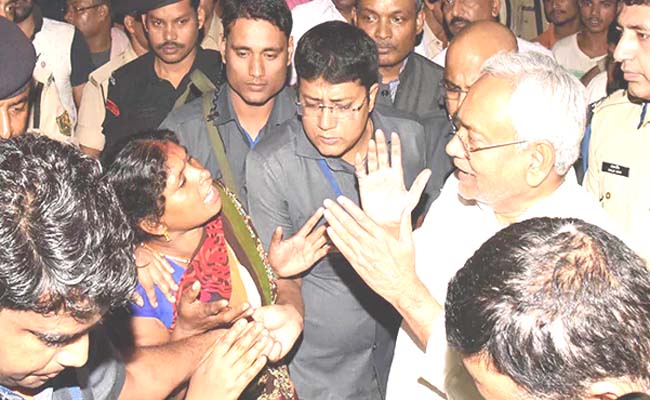
In spite of tall claims for development by Nitish Kumar government, immigration in the country is still highest for Bihar- it is at every level, from educated to skilled and non-skilled people, many are forced to leave Bihar and go to other states to get a job. This has been like this from decades and there is no considerable improvement on it during Nitish Kumar regime as well. In spite of huge talent and cheap man power available in the state, the Nitish Kumar government has not been able to convince the industries to invest in Bihar. Similar situation is there in the education sector, in last one decade the number of institutesoffering professional courses have increased, but still every year a large number of students have to go to other states for education.
To conclude, the two factors which had helped Nitish Kumar emerge and control the politics of Bihar are no more that relevant- Bihar has come far ahead from the state of hopelessness and there is high expectations from the government, which Nitish Kumar government is not able to cope up with. And with the changing political social dynamics, Nitish Kumar has lost the edge of being the only acceptable political option for different sections of the society in the state. Nitish Kumar has clear realization of both these facts, and so in such scenario - for the upcoming 2020 assembly election, the JD-U seems to be going safe, and instead of making its last 5 year work a poll issue, it is asking the electorate to trust the time tested Nitish Kumar over others.
* Rahul Vatsa is an IT professional from Bihar. He can be reached at vatsa.rahul@gmail.com
